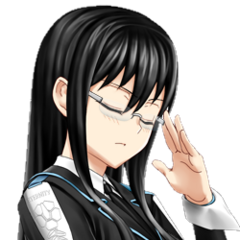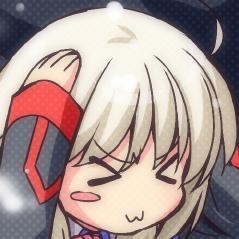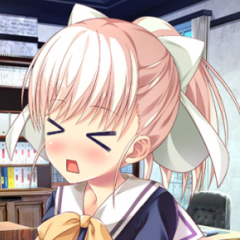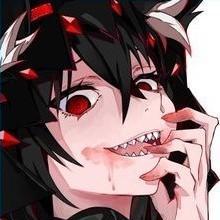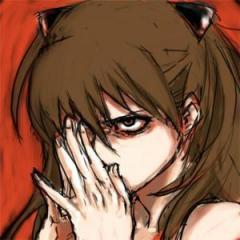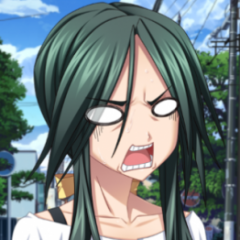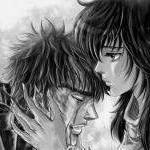Leaderboard
Popular Content
Showing content with the highest reputation on 11/19/16 in all areas
-
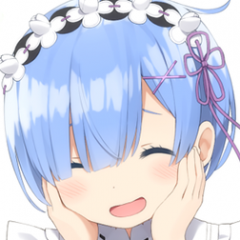
Post pics you like (Powered by Jun Inoue™)
Infernoplex and 4 others reacted to Kenshin_sama for a topic
5 points -

So I tried to woo some girls myself, but was met with this image:
TexasDice and 2 others reacted to Mr Poltroon for a status update
So I tried to woo some girls myself, but was met with this image:3 points -
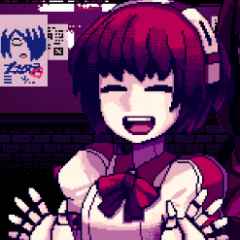
Post pics you like (Powered by Jun Inoue™)
Polycentric and 2 others reacted to Jun Inoue for a topic
3 points -
I think we can all agree I've read a lot of VNs. *waits for audience laughter with a smile* *looks sad when the audience laughter recording doesn't work* Anyway, over the years I've encountered a lot of writers. Some were mediocre, others were decent, yet others were good... and some were just great. I decided to list the writers I honestly think have a lot of talent and whose works are something we, as VN fans, should at least keep an eye on. Tier One presents writers who are 'masters of their craft', to the point where they can be put onto a pedestal with few qualms. My list: Hino Wataru- Hino Wataru is Akatsuki Works' primary writer. His bad habits include a tendency toward overuse of line repetition (like 'soredemo, to' in Comyu and 'norowareta sekai' in Ruitomo) and an absolute adoration for hedge philosophy themes in each VN he writes. However, if you can endure his quirks, his raw writing is actually really high quality, and he does have a serious talent for scenario construction. It's just too bad that you can tell how he favors his heroines based on their path length and closeness to the 'true' heroine. Masada Takashi- Now, the first thing that comes to mind to any of us when we hear 'Masada' is the famous/infamous VN Dies Irae. For chuuni fans and fans of elaborate prose, Dies Irae is a drug more powerful than heroin. For people who want prose to be straightforward and easy to understand, it is pure poison. His adoration for the use of phrasing rarely utilized in modern prose, flowery descriptions, and poetic phrasing have also made him one of the most impossible writers to translate, though. His preference is for grandiose settings, 'archetypical characters escaping their archetypes', and over the top plot twists. He is surprisingly good at avoiding giving away future story developments to the reader, and his most brilliant characters are usually the antagonists of the story, rather than the protagonists or the heroines. He is also a first-class master of the art of presentation. Kurashiki Tatsuya and Takahama Ryou- These guys are what I like to call the 'Masada Fanboys'. Their prose, their scenario and setting construction, and even the cadence of their poetry is all an imprint of Masada. For those unfamiliar with Light's works, Kurashiki Tatsuya was the scenario writer for Maggot Baits (which had unbelievably good prose outside of the torture/sex scenes) and Takahama Ryou was one of Izumo 4's writers. While their writing shows off a rather obvious obsession with Masada's works, that doesn't seem to keep them from writing enormously enjoyable stories and characters. The biggest difference between them and Masada is that they tend to place more of an emphasis on the protagonist and heroines than Masada does (as Masada is a master of the 'supreme antagonist' as is evidenced by Amakasu, Reinhardt, Mercurius, and Hajun). Evidence of this is Vermilion, Electro Arms, Zero Infinity, and Silverio Vendetta, all of which were VNs that were defined almost entirely by the protagonist and/or the heroines. Kinugasa Shougo- The writer of Akatsuki no Goei (the series) and Reminiscence (the series), Kinugasa Shougo is perhaps best known for his character-based situational comedy, despite having a surprising flair for building a setting. He has an inordinate fondness for dystopian settings and characters who are either amoral or outright villainous. Kaito in Akatsuki no Goei is perhaps one of the most amoral protagonists I've ever come across, possessing a capacity for directed brutality that I've found nearly unmatched in VNs combined with an arrogance that causes endless hilarity throughout the VNs involving him. However, this writer does have one huge flaw... he loves leaving things unfinished and/or to your imagination. He never concludes his stories, and things almost never have a 'happily ever after' feeling to them after he gets done with them. Takaya Aya- Perhaps one of the most versatile writers on this list, Takaya Aya is Caramel Box's primary writer, having been responsible for many first-class VNs, including Semiramis no Tenbin, Komorebi no Nostalgica, Shuumatsu Shoujo Gensou Alicematic, Otoboku 2, and Kikan Bakumatsu Ibun Last Cavalier. He is absolutely brilliant at creating empathetic characters and pulling the reader into their situations. He can do chuunige, slice-of-life comedy, nakige, and even a dark social commentary. Higashide Yuuichirou- Like Masada, Higashide Yuuichirou is/was (he is retired) primarily a chuunige writer and was Propeller's main writer until 2011. Unlike Masada, he specializes in a more 'standard' version of the hero. His protagonists are designed to inspire, his writing is full of humor (both standard manzai and self-effacing), and he has a mastery of catharsis that Masada simply doesn't possess. To be honest, I've only come across a few writers that can balance so many elements in a single literary work without having it all fall apart, and his works don't lose their flavor after multiple playthroughs. Takehaya- Takehaya is a master of catharsis, the creating of characters, settings, and scenarios that can draw out the emotions of the reader, forcing them into an emotional release despite themselves. All of his best works - from utsuge Konakana to the more recent Rakuen no Shugosha - rip into your heart and force you to make a place for the characters there. There are few writers out there that can do what he does, but I can't help but wish there were. Morisaki Ryouto- Morisaki Ryouto is a challenger for Takaya Aya in terms of versatility, capable of writing nakige, charage, hard sci-fi, chuunige fantasy (Fate/Hollow Ataraxia) and even heavy eros. While he isn't as brilliant as Takaya as a writer, he does have a gift for adapting himself to the genre he is writing, and it is always worth it to at least try anything he writes, even if the genre itself turns out not to suit your tastes. Shumon Yuu- Shumon Yuu is something of an enigma. He occasionally appears in the VN industry (every three years or so) and puts out a VN that is artistically brilliant (in the general sense) and possesses depths that are almost impossible to fully plumb in a single playthrough. Every VN he has put out since he hit his stride with Itsuka Todoku has been a kamige. He is also a light novel writer. He is brilliant at portraying both suffering and joy, drawing you into the setting and characters while presenting them in their best lights. If there is a writer in the VN industry I can say unequivocally is a genius, he is it.2 points
-

Welcome to Carlyle Review
masster_auron and one other reacted to littleshogun for a blog entry
Visual Novel Translation Status (11/19/2016) Welcome to my VNTS Review for this week, and as for the title since we had Enigma as the image header I thought that I'll just using the setting from Enigma (Carlyle) to made the word akin to the welcome at When They Cry series (They had 'Welcome to Hinamizawa' for Higurashi and 'Welcome to Rokkenjima' for Umineko). As for the VN, congratulations to Fruitbat Factory and PhleBuster as the employee of Fruitbat Factory (Or should I said Phlebas who was quite known as Dakkodango Translation staff back at 2010, although I guess it was quite obvious) for the release of Enigma, and of course thanks to Conjueror too as the translator. In regard of Enigma, I think it was quite positive looking from Kaguya enjoying this and gave 5 stars here for the review. Also for now the VNDB score was at 8.17 although to be honest it's still not enough though because it was only had 9 votes (Much less than Fata Morgana when back there was only had 62 votes). For me, well perhaps I will take this game in the future. Other than Enigma release, this week we also had Shuffle released on Steam which was only PS2 port according to some people, so obviously there will be no sex scene there duh (Nevermind, it's just like Dracu Riot patch release ie slip up release. But I'd decided to still gave my comment). As for my response, well I'm already completed this so I think I'll not that interested with Steam port, and I'd already knew some VN that was better than Shuffle. But it's still one of my first serious eroge, and nothing could change that. Oh, since we had Shuffle release on Steam might as well say rest in peace to the writer, Argobarrier who passed away back at March. As for MoeNovel, still not clear whether it's new release or just one of already released VN go translated. Let's just wait and see, although I said that there's a chance that MoeNovel will using crowdfund and chapter based release if they developed new VN according to the current trend. As for the roundup for the translation progress, first of all once again Mangagamer made surprise update and I'd already listed it at last VNTS Review. So here's the progress below and I'd already commented about it at my last VNTS Review too. That's all for relisting of Mangagamer updates here. This week Sekai also at their usual, although it was still good though so noting much to comment here. For roundup Chrono Clock was at 64.66% translated (At least it was sped up from last week progress), Maitetsu was at 59.69% translated, Tenshin Ranman was at 68.654% translated, Bokukotsu was at 15.93% translated, and Princess Knight Chapter 2 was at 98.27% translated. For the info of releases, we had both of Nashvile and Japanese School Life which will be released at three days later (November 23rd). From the first look, Nashvile was some kind of yuri VN which apparently something alike Highway Blossom, while Japanese one sounds like Go Go Nippon only with also transferring school although looks like the description was spoiling all of the story though. That's all for Sekai For fan translation, this week we had Tsui Yuri managed to had 16.5% retranslated; Loverable was at 32.04% translated, 12.97% TLC-ed, 8.89% edited, and 5.21% QC-ed (Very nice progress there, and by the way the translation team was preparing trial patch for Loverable); Majokoi was at 58.1% translated and 43.8% edited (Fred said that there's some nice progress from both of Cinderella and Kozue's routes translation); and finally this week we had Sayooshi finally reaching 40% translated mark (Or to be exact at 40.2% translated). Oh, and this week we also had Ushieta was already pass a quarter mark translated here (27.5% translated), although too bad though that they plan for releasing partial patch was cancelled because of some technicality difficulty according to this post (Good luck). For last update here, finally ToHeart 2 getting a proofreader and hopefully from now it'll be smooth sailing to the finishing touch. That's all for this week VNTS, and see you next week. PS - Today finally Arcadeotic gave his long awaited update here. So let me write the updates for both of Bishoujo Mangekyou progress. For Bishoujo Mangekyou 1 we got the progress at 96% edited, 91% QC-ed, and 48% TLC-ed; and as for 2.5 we got 49% translated there (Almost halfway) and 45% TLC-ed. That's all for the update, and thanks.2 points -
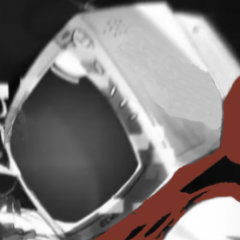
Restart
mitchhamilton and one other reacted to Arcadeotic for a blog entry
Truly, I am sorry. The last update was three weeks ago, and in that period of time, I’ve had a bunch of things happen to me, both good and bad. First up, I was facing a little bit of an identity crisis after two, three years of nothing of the sort. Now, this was quite big, which did block my progress for a while, but I still got some done and posted an update that week. The after-shocks, however, did ripple for a bit longer. Worry not, I’m all over it, and a better person due to it, but that did happen and did chip at my motivation to both translate and to make updates. I don’t have a habit of having these crises, but nonetheless, I hope I have your understanding. Secondly, the good. I had my 18th birthday party celebrated by my most close and loved ones, as you may have seen from my Twitter, and that did somewhat chop off my attempts at translating and making updates. Otherwise, it was quite nice. I saw some relatives I haven’t seen for a long time, as well as my closest friend. All in all, it was very nice. Now that we’ve done with the reasons for my absence, let’s go to the project updates. Biman -1- As for BIman1, past these weeks, the progress’s been good and steady as always. There was a miscalculation on my part in the previous update, so I apologise for that. Anyways, there has been a decent amount of progress nonetheless and everyone on the team has been quite busy, so fear not. Biman -2.5- On to a more pressing part of the projects. As I stated above, I’m sad to say, but I was lacking the dedication, motivation, and the time to translate almost at all in these past weeks as well as school getting respectably harder as weeks passed on Now, I have gotten some of my motivation back a bit, but the progress can be a bit slower than before, but I will keep translating, so do not worry, it’ll just be a slower phase for a while. Thank you for understanding.2 points -
2 points
-

Post pics you like (Powered by Jun Inoue™)
AnimalSoundss and one other reacted to Jun Inoue for a topic
2 points -
Thanks for response but no... just no.2 points
-
I think you should stop trying to theorize on what "females" like because this is a very cringeworthy conversation right now. I know plenty of women who like VNs with dude leads and I can see how Moenovel thinks they can market these kinds of games to younger girls.2 points
-
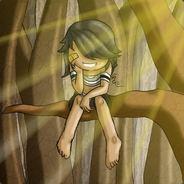
Alpha's Adventures [Kickstarter LIVE!] [GXG] [18+]
Gibberish reacted to officeryou for a topic
Alpha's Adventures is now live on Kickstarter: https://www.kickstarter.com/projects/1847704475/alphas-adventures-an-adult-yuri-visual-novel Please check it out and help spread the word/consider supporting it if you can! Synopsis Follow Alpha as she changes herself and others across 4 unique routes. The setup differs from most visual novels in that there is no common route - you simply pick the heroine of your choice from a selection screen and enjoy their self-contained story. Completing all of the heroine's endings allows you to unlock Alpha's and ??? shared route. Project overview I plan to launch a kickstarter so that I can finish (and if stretch goals are met, extend) this project. I'm aiming for an early January 2017 launch date, which is also when I will release the demo I am currently working on. The demo will cover a portion of each heroine's route. Links Out http://officeryou.tumblr.com/ https://twitter.com/officer_you Information -3 heroine routes -3 choices per heroine route -Each heroine has 2 endings -1 unlockable character/route for completing every ending -10+ CG's -For 18+ only (will contain scenes of an intimate nature and themes some may find distressing) Main Character Heroines Side characters (stretch goal exclusive) ??? CG Previews With all of that said and done, I welcome any and all feedback and questions! *Except the kind of questions that invite spoilers, of course.1 point -
After reading Clephas’ recent blog update I decided to rip him off was inspired to do something similar. My own experience with visual novel is not as vast as his so go read his blog, his list is awesome and is way more interesting, so just give up reading this and go to his blog -__- Every work should be judged on its own no matter who the writer is but it’s impossible, in my opinion, not to rely on those writers that really speak to us, those that know how to push our buttons and inspire us, touch us deeply, bring us to tears, and blow our minds. When you find a writer that does all that for you then you’ll probably want to read more of his works if only because nobody else does that for you. Takumi Nakazawa – Best known for his work on the Infinity series, Nakazawa is one of the most incredible writers and story builders of our time. He writes Hard Science Fiction Mysteries and is completely crazy for plot details. Every single scene in his stories have a purpose to be there, every line can have multiple interpretations. Each story he writes explores many philosophical themes and scientific theories. His obsession with details what gives his stories so much depth. His characters is another part where he excels at as each one has a reason and an important part in the overall narrative. Nakazawa is not just a writer but a director and a producer but his plot structure and narrative mastery is in everyone of his major projects. Notable works: Never7 Ever17 Remember11 I/O Root Double. Uchikoshi Koutarou – Very famous among the western visual novel community and one of the very few writers recognized outside the community. Uchikoshi worked closely with Takumi Nakazawa on the Infinity series, that is where he found his passion for Science Fiction Mystery stories and what he kept writing since Never7. His ideas are incredible and just as much fascinating as Nakazawa’s ideas with a detailed narrative structure only matched by Nakazawa himself. It’s impossible to talk about either of those writers and not to compare between their individual works. Uchikoshi is an amazing writer but he doesn’t spend as much time into fleshing out his plots as much as Nakazawa does. But his stories are still amazing and highly entertaining. Notable works: Never7 Ever17 Remember11 12Riven 999: Nine Hours, Nine Persons, Nine Doors Zero Escape: Virtue's Last Reward Zero Escape: Zero Time Dilemma . Eve - New Generation - Masada Takashi – This guy is… the only words floating in my mind is insane and epic. His got the most chuuniest chuuni style of any writer out there. Until you read him you don’t know how good his narrative mastery truly is and just how much research he puts into his stories with everything from the bible to ancient mystical rituals to all kinds of mythologies and philosophies. The guy is a freaking poet and manages to turn a chuuni battle story into the most mind blowing FEELS kind of visual novels. What even more interesting about him is that he’s not just about the chuuni, his stories are very character centric and he is a master at making the reader sympathize with his characters and gives just as much attention to them as he does to everything else in his stories. His stories are like epic poems or German operas with extravagant imagery and presentation. He is the guy that put Light on the map and his Dies Irae built a lot of fan following for the company. Notable Works: Paradise Lost Dies Irae Kajiri Kamui Kagura Soushuu Senshinkan Gakuen Hachimyoujin Soushuu Senshinkan Gakuen Bansenjin Dies irae ~Interview with Kaziklu Bey~. Kurashiki Tatsuya & Takahama Ryou – Also known as the Light’s non Masada chuuni team. Masada has a very unique instantly recognizable style that is both incredible and difficult to replicate. Kurashiki Tatsuya & Takahama Ryou don't try to copy Masada and instead try different a lot more diverse styles compared to Masada and every visual novel they worked on is a completely fresh and unique work by its own merits with different presentation, visual, and writing style. Their stories are epic chuuni through and through with great prose and narrative structure. Sometimes they will bring another writer as they did with Mugi Ayumu when they worked on Zero Infinity, Electro Arms, and Silverio Vendetta or Monaka Koke for Silverio Trinity. Tatsuya also did some contractual work for Clock-Up on Maggot Baits and both of them worked together on Studio e.go!’s Izumo 4. Masada and this non Masada team defined what a chuuni visual novel should be like, they are the superstars of any chuuni visual novel reader. Notable Works: Vermilion -Bind of Blood- Zero Infinity -Devil of Maxwell- Electro Arms -Realize Digital Dimension Silverio Vendetta Maggot Baits Izumo 4 Silverio Trinity(coming soon). Higashide Yuuichirou – Another one of the best chuuni writers. His style is both varied and distinctly his own. One of the most noticeable things about him is how much he loves to create very unique settings and puts a lot of time into building his worlds. The settings in his stories are as much a character as the main characters themselves, pick any of his works and you’ll be pulled into a place so alive and imaginative you will believe it actually exists. When it comes to characters Yuuichirou is a master, at least when it comes to protagonists and the main cast and his characters really shine. Besides writing cool stylish epic battle scenes Yuuichirou is also the best comedy writer in the chuuni genre and his comedy can get absolutely hilarious. Sometimes he’s so good with characters and humor that you’ll not want those so called ‘slice of life’ scenes to end once the real plot kicks in. Unfortunately he left Propeller the company where he created his most famous works and went to work for Type-Moon. Notable Works: Ayakashibito Bullet Butlers Chrono Belt Evolimit Tokyo Babel. Ryuukishi07 – One of the most prolific visual novel writers of this decade. The guy is like a perpetual machine never running out of oil and never rusting. He is known mostly for Higurashi and Umineko two of the longest visual novels ever made and are well known for being some of the best mystery stories ever written. His prose style is long but never boring, slow, or full of filler. It’s quite amazing to see long works without being full of fillers but Ryuukishi07 somehow does it. His works are very diverse on the one hand and very recognizable as his own style on the other. He also did a lot of work for and with other people like Lucia’s route in Rewrite, Ookamikakushi for Konami, and Iwahime for DMM. He can write anything from horror, a style he is known for, to drama and mysteries. Currently he is working on Rewrite side stories and is writing one of the scenarios for the Kamaitachi no Yoru remake. Notable Works: Higurashi no Naku Koro ni Umineko no Naku Koro ni Ookamikakushi Rose Guns Days Iwaihime Trianthology ~Sanmenkyou no Kuni no Alice~. Hideo Kojima – Aka the father of Metal Gear series. His Snatcher and Policenauts are a lot more like Japanese adventure games than straight out visual novels but these games are story driven and any visual novel gamer should not miss on either of those games. Kojima fills his stories with a very detailed setting, detailed and interesting characters, and a very detailed well crafted plots. This incredible detailed stories never feel like too much or too overwhelming because every single detail is explained in a clear and understandable manner and it’s a lot of fun to try out every item and every option just to see what new stuff you’ll learn about the world, characters, and plot. Both games are full of futuristic atypical detective stories and have what could only be said as the best moments in gaming history. Even back then Kojima was a master game designer and an excellent storyteller. Notable Works: Snatcher Policenauts. Takumi Shuu – The man behind the Gyakuten Saiban aka Ace Attorney series. Similar to Kojima games, these are more of the Japanese adventure genre rather than pure visual novels. Not much else can be said about the awesome Ace Attorney that hasn’t been said before. It’s got one of the most boring premises, you play as a lawyer Yeah, Sure. That sounds like fun. But Takumi Shuu took the idea and turned it on its head with of the wall over the top characters and a lot of very well crafted mystery cases to solve. In a way all the cases are episodic but Takumi is such a smart writer he always has some kind of surprise up his sleeves by changing the formula in some way and brings everything together by the end in clever unexpected ways. Most of his characters are, for lack of a better word, very annoying. But even then the stories are so interesting that even that won’t stop you from having a lot of fun with his games. His Ghost Trick is a very innovative puzzle style game and shouldn’t be missed either. Notable Works: The Entire Ace Attorney series Ghost Trick. Kodaka Kazutaka – Worked in the games industry for a long time now and was a secondary director on Clock Tower 3 Kotaka Kazutaka is more famous for a small little series which today has exploded into a huge franchise, the Danganronpa series. Once again, like the previous two writers his games are Japanese adventure games and not what the purest will call a visual novel but really who cares about these small details anyway, Danganronpa is here to tell a story and that’s what’s important. Referred as as the Psychopop genre by Kazutaka himself, who sees himself as the creator of his own genre, Danganronpa can very easily be compared to the Ace Attorney series because of the episodic style of mystery cases the characters must solve. But Danganronpa has an overarching plot and a plot that is very detailed and a cleverly crafted crowning achievement of mystery, horror, despair, dark and bright humor, and plenty of twists and turns. The closer you get to the end of each game the more your head will be spinning and twisting with your jaw dragging on the floor. His characters are really fun, interesting and very likeable, most of them at least and they go through a lot of extreme stuff. Kazutaka loves to leave gamers in complete despair. Notable Works: Danganronpa Super Danganronpa 2 Danganronpa Another Episode Danganronpa 3 (anime) the next game in the series New Danganronpa V3 Fujisaki Ryuuta – The Grisaia guy. An excellent writer putting a lot of care into his characters and brings them to life. Not everything he writes is gold but with each new story he gets better and better. With a clear and easy prose and a lot of character and hilarious comedy Ryuuta is master at writing fun character exploration scenes almost perfectly avoiding the long boring nothing happens so prevalent in other visual novels. Grisaia is his most famous work and while the first game in the series had some very slow scenes that feel like they shouldn’t have been there, most of the game is a lot of fun and entertaining as well as humorous enough it never gets tiring. However he’s also known for writing in other genres like in Draculius and Hatsuru Koto Naki Mirai Yori both of which are great and highly entertaining. An interesting trivia, Grisaia is not the first work by Fujisaki Ryuuta to have an official English release, he was one of the scenario writers on Tea Society of a Witch released by Hirameki International. Notable Works: Draculius Grisaia no Kajitsu Grisaia no Meikyuu Grisaia no Rakuen Hatsuru Koto Naki Mirai Yor the upcoming Grisaia: Phantom Trigger. Hiei Murasaki – The Cyberpunk guy heading the Baldr series. But he also worked on a lot of other visual novels with very different genres. He has great with characters when needed and a big idea man when appropriate. The Baldr series is what he’s mostly known for because of the awesome ideas but he also worked on the mecha anime style and highly entertaining Dengeki Stryker visual novel. His prose is very easy to read except when he goes into info dumping in which case it’s doubtful even the Japanese readers can understand him completely. But Murasaki’s awesome and crazy entertaining stories earned a huge place in a lot of visual novel player’s hearts. Notable Works: Cho Dengeki Stryker Baldr Force Baldr Sky Baldr Heart. Watanabe Ryouichi – An almost sinfully unrecognized writer. Watanabe Ryouichi is a very diverse writer adapting different style depending on the needs of the company and projects he works on, ranging from sports stories to science fiction. His prose is simple and very easy but can be highly emotionally charged full of dramatic elements. He is also a big ideas man and his ideas are BIG. Ryouichi also likes to troll his readers by disguising epic science fiction stories with marvelous ideas and wrapping it all in what, at first, appears to be a boring nukige. Nevertheless he is the one writer that needs more recognition and his works need to be translated into English ASAP. Notable Works: Ao no Kanata no Four Rhythm Harumade, Kururu Natsukumo Yururu the upcoming Akiyume Kukuru. Fushichou & Shimantogawa Seiryuu – Another pair of great chuuni writers. Fushichou and Seiryuu work for 3rdEye and wrote all four of their games so far. All chuuni, all have great beautiful and sleek presentation with great writing and good prose. Bloody Rondo was not their best work but with each subsequent game their stories got much better with a better focused plot and great narrative structure techniques. They are one of the best chuuni teams in the industry with a style all their own different from what Light, Propeller, or any other chuuni developers do in writing technique and presentation design. As chuuni stories go this pair’s games are full of action, packed with battles, fighting techniques and a fully developed magic system. Like every good chuuni writer Fushichou and Seiryuu also write great and lovable characters with their own dreams and motivations with personalities easy to care for. Fortunately their latest game Sorcery Jokers is officially coming in English, probably sometime next year. Notable Works: Shinigami no Testament ~menuet of epistula~ Gensou no Idea ~Oratorio Phantasm Historia~ Sorcery Jokers There are many more visual novel writers I wanted to talk about but I don’t have enough experience with their works yet to write about them in depth. Writers such as G.O., Sca-Ji, and some other interesting mystery, comedy, chuuni, science fiction, and drama writers. Maybe in a year or two I’ll expand the list. Thanks for reading.1 point
-

What Anime are you watching now?
ChaosRaven reacted to Jun Inoue for a topic
Eh, I also didn't see the fascination on volleyball. Or, rather, before watching Haikyuu I thought "how can people play and/or watch volleyball? Is there anything more boring?" Well, the author and studio really know how to make it friggin exciting xD It also helps that the characters are excellent, too. Diamond no Ace is a bit more shounen-ish in spirit, but keeps it cool and real like Haikyuu with the actual sport and playing.1 point -
Komorebi no Nostalgica's got this kind of shizzle, and it's real shiny.1 point
-
1 point
-
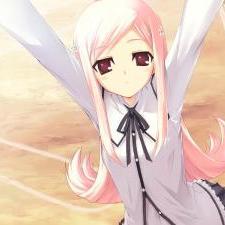
Recent Anime Recommendations
EastCoastDrifter reacted to ittaku for a topic
Not sure how far back you want, but these are some of the shows of the last couple of years that stood out for me. Rakudai kishi no cavalry Kiznaiver Re: Zero kara hajimeru isekai seikatsu Relife Sound Euphonium Is it wrong to try to pick up girls in a dungeon Monster musume Oshiete Galko chan Kabaneri of the Iron fortress Konosuba1 point -
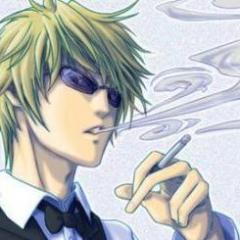
Recent Anime Recommendations
EastCoastDrifter reacted to Shikomizue for a topic
Well, Nanbaka is pretty hilarious if you like comedy with a bit of action. And there's always JoJo Part 4.1 point -
Like Kiririri said White Album 2 is probably by far the best work about dramatic love triangles. Despite having only two routes with the love triangle,Moshimo Ashita ga Harenaraba is a very good game in a whole and to me is the best Palette work. Koi de wa Naku is something different from the majority with a 2 man 1 girl triangle, despite being overwhelming at times, it's worth playing the first 30 hours only because the true route.1 point
-

Bishoujo Mangekyou -Katsute Shoujo Datta Kimi e-
Infernoplex reacted to Arcadeotic for a topic
I'm back at it again: https://euphemictl.vntls.com/2016/11/19/resume/1 point -

The DLC dilemma
Okarin reacted to Kurisu-Chan for a topic
In the case of revelation, it's not only a whole new game, it's basically the true route.1 point -
It's not hard. Seeing what you have already played you should be fine.1 point
-

Dramatic love triangle
mitchhamilton reacted to ヤミハナ for a topic
I get it why a lot of people hate School Days because of the protagonist, the infamous bad ending and a few other aspects of the game, But personally, I enjoyed the dramatic love triangle especially on making the decisions on not breaking the heroine's heart. Sure, there are some scenes that was quite unpleasant to watch but that's what actually made me want to play the game more. The yearn on getting a good ending for the certain heroine.1 point -
Signalist Stars came at me from out of left field, smashing me across the face with a spike grenade. I literally wasn't expecting anything from this VN, as my recent experiences with new companies have left me unwilling to hope for better. This VN does, in my mind, fall into the charage genre, but it does it so well that I was left a bit stunned. Signalist Stars is based in a city where people who have a burning passion are encouraged to pursue it, regardless of what it is. In this city, for the most part, those who sneer at people who have bright hopes for the future and those that try to smash young people down with the hammer known as 'reality' are virtually nonexistent. For people who grew up without discarding their dreams, it is a utopia. Atsushi, the protagonist, is one of those people, a young man who desires to become a hero. He is the head of a committee devoted to dealing with the problems that pop up as a result of the somewhat indiscriminate nature of the city and school's affirmation of people's dreams. To be specific, this policy has led to 'geniuses' (people who excel in one area to insane degrees) being a little out of control, and the day to day life is a bit wacky and over the top. Atsushi is an idiot. I mean that literally. He is so stupid that he makes a chimpanzee seem intelligent sometimes... however, he has a nose for trouble, an endless passion for helping people, and a willingness to discard his own well-being in the pursuit of helping others. He also talks like a delinquent and loves a good fight. Trouble is his drug and peace is its aftermath, lol. Anyway, this VN is extremely comedic for most of its length, Atsushi's antics and stupidity creating so many running jokes that I found myself smiling constantly throughout most of the VN. However, if you asked me if this is just a straight-out comedy, the answer would be a definite no. This VN has some dramatic moments, with one major one serving as the turning point just before the route split and one in each of the heroine routes, where the protagonist and heroine must confront both of their issues as a team. This drama is fairly serious, though it tends to be resolved easily, in the fashion that is common to charage. Nonetheless, it adds just the right level of spice for me to consider this one of the most technically excellent charage out there... from a writing perspective. Unfortunately, there is one issue with this VN that is as annoying as hell. Of course, it is a technical one and one that will probably be fixed with a patch later on... but there are huge problems with the sound in this VN. To be specific, voice cut-outs, voice switches, sudden musical and vocal volume shifts, etc. For some reason, in this one area, this VN has points where it suddenly jars you with its imperfection. The actual BGMs used are 'common' ones I'm familiar with from other games, indicating that they are 'recycling' music from other VNs (probably at low cost). However, they are mostly used ideally. If it weren't for the technical issues (which might be programming-related) I'd honestly say that using 'generic' music wasn't a minus. Even if one ignores that this is a first effort on the part of this company, this VN is a gem. While it needs some polishing (preferably with a technical patch to fix the sound problems), it is one of those rare charage that appeal both to me and the mainstream without throwing either side out of the boat. If you asked me what I liked best in this VN, I'd have to say it was either the comedy or the character dynamics (both of which are intricately interrelated). My favorite heroine was Isumi, the 'witch' and my favorite character overall was Atsushi (yes, despite the fact that he is an idiot). Why do I like Atsushi? Because, despite being an 'idiot' character, he actually manages to escape the archetype, becoming something more than the frame that was used to shape him through the skill of the writer. VN of the Month, October 2016 This time it is a straight-out race between Sora no Tsukurikata and Signalist Stars. Both VNs escape genre and archetype flaws through skilled writing and surprising escapes from the traps of convention, and both VNs managed to surprise me with their levels of quality. They are neck and neck in my mind and almost so in my heart. So, when it comes down to it, I'm going to decide this Month's VN of the Month based on a smidgen of personal bias, simply because they really are that equivalent when I eliminate that bias. In other words, Sora no Tsukurikata is VN of the Month October 2016. Both games are going on my list of VNs to play from this year, though. For those of you who just want a comedic romance and slice-of-life (albeit an unrealistic one) Signalist Stars would probably be the better choice, whereas Sora no Tsukurikata is a far better choice for raw story and plot. Anyway, have fun yall, and look forward to November's releases! I won't be playing Nanairo Clip, due to my inability to enjoy any story focused mostly on the entertainment industry in general and the Japanese idol industry in particular.1 point
-
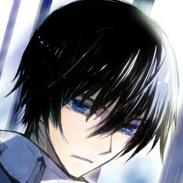
English version of ChuSinGura 46+1 released on Steam... for free?
ChaosRaven reacted to WinterfuryZX for a topic
I think the excessive fanservice is one of the main problems of this game. I can't take charcters like Fuwa Kazuemon seriously while dressed like that, really...1 point -
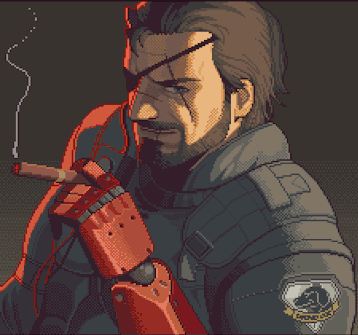
Moenovel teases localization of a new title
WinterfuryZX reacted to Decay for a topic
Sure, but Moenovel was aiming for an audience that may not be fully familiar with what bishoujo VNs are like. They saw an opportunity to tap into a market that none of the other VN publishers were ever able to do and I think they were actually very successful at that. Whether or not they'll be willing to go for a round 2 is another thing entirely, though.1 point -
Well when you talk about marketing it's kind of important to focus on the bigger picture, which means trends among demographics. Sure plenty of guys like otome, and plenty of girls like galge, but each genre is still specifically designed for that one target gender. Even if you remove the sexual elements of a galge (though technically it's impossible to fully remove things like sexual tension), the game is still designed assuming a male player, with the ultimate goal of having that player fall in love with the heroines. Frankly, I think western romance stories are too different from that formula for you to infer that people who like sappy western romance stories (your young girls in this instance) would have a similar interest in galge romance stories. At least in the sense that doing things that would upset male players (removing sexual elements) wouldn't garner you enough people from different demographics to be worth it.1 point
-

Piss off Fuwanovel in one sentence
Mr Poltroon reacted to littleshogun for a topic
May I request the translation of Sakura no Uta, White Album 2 - Closing Chapter, and Soukou Akki Muramasa with the deadline one week here? Thanks in advance.1 point -
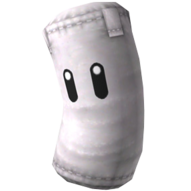
Moenovel teases localization of a new title
Nandemonai reacted to Fred the Barber for a topic
Nothing can save us now. Abandon all hope, ye who enter here.1 point -
Not too bad, based on the little information provided I'd say it could interest me, that being said I do like the design for Myra. Premise: 7/10 (can get higher or lower as more details become known) Best of luck with your project though1 point
-
Pick a Pink!
Fred the Barber reacted to Suzu Fanatic for a topic
I guess it's about time for a yearly change, time to pick out another Suzu shot~1 point -

Medium length... something
Fred the Barber reacted to littleshogun for a topic
Maybe you'll not satisfied in regard of slice of life from the VN, but if you need good atmosphere and music you could try Symphonic Rain. Other than that, maybe MYTH if only because there was good music (The composers were from 07 Expansion). Have fun.1 point -

Moenovel teases localization of a new title
Nandemonai reacted to Fred the Barber for a topic
I'm pretty sure, based on my complete lack of references, females tend to like over-generalizing the preferences of the opposite gender, not all this stuff you guys are talking about.1 point -
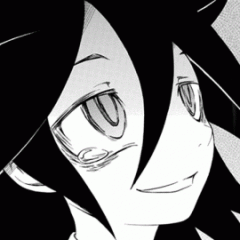
Real Talk: To Heart 2
Suzu Fanatic reacted to Narcosis for a topic
It's not bad, don't worry. Just enjoy it like you'd be reading it years ago when it was first released1 point -
Fatal Fury: King of Fighters The fighting and shmup games were the most popular genres among both the hardcore and the mainstream gamers in the 90’s. The fighting game genre can be traced way back to the 80’s but it is Capcom’s Street Fighter 2 where the storm really began. Street Fighter 2 was on a completely different scale and blew everything that came before it. Nobody thought a video game could reach this kind of amazing quality. Many companies where getting on the hype train and started to develop their next big fighter to crush the success of Capcom’s darling, many tried, very few came close. Unfortunately the genre’s popularity has dwindled to microscopic proportions mostly developed by hardcore fans for hardcore fans, it’s a small but a very loyal market and fills the void appropriately. Takashi Nishiyama was the man who created the very first Street Fighter when he was working at Capcom. The goal according to him was to make a game with really deep characters so they wrote a lot of detail for each character everything from what kind of foods they like to what family structure they belong to. None of that made into the game but Nishiyama wanted to make something cinematic and believed all that work helped to deepen the characters. At the time Capcom had three development studios with the head of the studio the sole visionary of the entire project. This didn’t sit well with Nishiyama who worked on concepts and ideas but wanted others to have the freedom to flesh out those ideas to give the work a much needed fresh and unique spin. This didn’t sit well with Capcom’s higher ups and soon after the release of Street Fighter Nishiyama’s disagreement with his supervisor led him to leave Capcom and become head of development at SNK where he had a complete freedom to work exactly how he wanted helping SNK to become Capcom’s biggest competitor. Very few made polished fighting games the way SNK did even though Capcom’s giant towering success was impossible to bring down. The first major project Nishiyama did was working on the Neo-Geo arcade system and was the first person to propose the idea for both the arcade and the home console systems. Arcade machines were very expensive at the time with no guarantee the arcade owners will make a return on their investment. Changing games was also a really painfully delicate process requiring the owners to tinker with the mother boards which could take a few hours of work. Piracy was also a difficult issue to handle and even led some companies to make self destructive machines if they detected something is wrong with the original game, like Capcom’s own CPS-3 machine. Neo-Geo tackled all these problems in a very efficient way. First it was more like a home console than a bulky arcade machine, it worked with cartridges and was as easy to change games as on an actual home console, some systems even had as many as four cartridge slots saving time on switching games. The Neo-Geo was a really powerful machine and with every year it seemed like it was getting more and more powerful, when Super Nintendo and Genesis games held 24 Megabits at most, the Neo-Geo games started at around 32 megabits and went all the way to the 700-800 megs. This was insanely huge and helped Neo-Geo be an exciting attraction with every year as each game looked, sounded, and played better than previous year enticing returning players to see what awesome new games they can try. The games cost only about $500 which is huge compared to the home consoles but are three times cheaper than most other arcade systems. The high quality of games and the cheap price helped to fight piracy and contributed to SNK’s success. There were two main versions of the system, the MVS which is the arcade system and the AES system and was a home console version. In the following years SNK released a few more consoles but none reached the incredible popularity as the AES system. Nishiyama’s desire to make a movie style martial arts fighting game with a story and deep characters led to the creation of some of the most interesting games in the genre. Nishiyama considers Fatal Fury as his Street Fighter 2 and had many ideas he couldn’t make work in the original Street Fighter including the character depth and a story driven game. And that is where things begin to roll in the first game in the series, a story that will span all through the entire series. Released in 1991, Fatal Fury: King of Fighters is known in Japan as Legend of the Hungry Wolf: The Battle of Destiny and will set SNK on a new path. In Southtown a city somewhere in America two men studied under the martial arts master Tung Fu Rue. The name of these two men were Jeff Bogard and Geese Howard. Geese had very brutal ambitions and intended to use the skills he learned to gain power over the city’s criminal business for his own gain. A rivalry start to grow between Geese and Jeff but their master continued to impart his knowledge to both. Things fell into disaster when the master chose Jeff to be his successor, jealousy and resentment ate at Geese’s mind. Shortly after he started to gain power he confronted Jeff and killed him. The incident had a witness, Jeff’s older son Terry Bogard also known as the Hungry Wolf. Tung Fu Rue took him in and started to train him the skills he once imparted on his two students just a few years before. Jeff had another son Andy Bogard who was sent to Japan to train under a different master. At the same time somewhere in Thailand a Japanese born young man, Joe Higashi, was training in the arts of Muay Thai. Now ten years later the three men heard about the fighting competition sponsored by Geese they decide to sign up in the hopes of defeating all his fighters and taking revenge. Story was very important to SNK and their early games followed strict narrative rules even if it means limiting what the player could do or which characters can be selected. In the first Art of Fighting a single player game had only one of two characters to choose otherwise the story just didn’t work. Same thing happened in first Fatal Fury, you can only select one out of three characters because story wise it wouldn’t make sense to select the other fighters. SNK pretty quickly stopped doing that with their later games and opened the entire roster of fighters to choose from even in the single player modes. As you begin the game you get to choose one of three fighters, Terry Bogard, Andy Bogard, and Joe Higashi and then select your first opponent to fight against. And things continue from there. The focus on the story prevails even during the game and between the matches you’re shown what Geese is saying about you as he gets more and more angry as you get closer to winning the tournament. Characters are one of the most important aspects of any fighting game. The game can be very fun to play but it is the characters and their visual aesthetics what attracts the gamers. SNK fighting games always had some of the most best character designs of any fighting game, unfortunately Fatal Fury is not one of them. Besides very few personas none of the characters are all that interesting to look at. Characters and animation is one of the most important aspects of a fighting game second only to gameplay and even if the gameplay is generic the characters and visual aesthetic is what gives the game its real identity and it is also the first thing that attracts gamers into putting more quarters into the arcade machine or run to the store and buy one of the console ports. Unfortunately most of the characters in this first Fatal Fury game in the series lack the visual eye pleasing attractive bright smooth clean-cut designs the kind that made Street Fighter 2 characters favorable among gamers. The three player characters, the final boss, and perhaps one more character had engaging likable designs while the rest felt like an afterthought almost as if they weren’t important enough and cast aside like worthless incompetent and completely pointless. With later games SNK will change their visual style and will push the limits of 2D graphics in games to the limit. However their games were also full of really unbelievable amount of details and unexpected surprises in their fighting games. Fatal Fury had a lot of these wondrous details in each character’s stages as the morning will turn to dusk and the dusk will turn to night after each round. This might not sound that neat but unlike today’s 3D games where you can just adjust the lighting and change from day to night just by changing the color a light and with today’s physically based shading changing the lighting is a snap, however in older 2D games the artists had to recolor each stage from scratch to fit each time of the day and since each stage has at least three different color schemes it means there are three different color renditions for every stage. In Tun Fu Rue’s stage the first round starts at an early evening with lightning flashing in the sky way in the distance and in the 2nd and 3rd rounds the characters will be fighting under a heavy rain. The Capoeira master’s Richard Myer stage has light railings on the ceiling where he can hang of and do his special rotating kicks which can be hard to avoid because of Richard’s long legs. In Hwa Jai’s stage when he has less than 75% of health one of the spectators will thrown him a bottle and he will leap up grabbing the bottle then drink it and become berserk, all in the middle of a fight. That spectator, it turns out, under Geese’s employ. Billy Kane fights with a red cane and if you brake it or if he throws it at you but fails to catch it back then after one of the spectators will throw him a new cane. Billy Kane’s stage also has this truck on either side of the stage and if he kicks you in that direction you’ll actually land on the truck and bounce off it as the truck shaking off and tries to straighten itself. It’s these cool details that set the game apart from the rest. Oh but the fun doesn’t stop here. If another player joins in then instead of interrupting the fight and having a player vs. player battle the 2nd player will actually join you in a 2 against 1 co-op battle. This evolutionary gameplay idea was unfortunately never used again and even never tried by anyone else. The tag team gameplay might have spawned of off Fatal Fury but with tag team you switch between characters on the fly while in Fatal Fury you two players controller their characters at the same time. It seems that not even Fatal Fury knew what to do with this because once you defeat the enemy the game forces the players to fight against each other and the whoever wins will sadly continue to progress through the game the game alone unless the 2nd player throws in another quarter into the machine. Perhaps that was the real intention. With only one button for punching, one button for kicking, and one button for grabbing and throwing your enemies, the gameplay appears to be deceptively simple but this three button setup provide for a lot of complexity and a great volume of attacks and special moves to execute. The characters can also fight on a different depth plane. One character might escape another’s attack by jumping into further back it to the background plane. This is something that was done only in Fatal Fury and if felt like there is a sense of depth to the environment while the characters hop from plane to plane dogging their opponents while at the same time trying to find the best opening to hit that one winning kick and end the round. There are also bonus stages like in Street Fighter 2, the first Street Fighter had bonus stages too, however in Fatal Fury it is disappointing to see the same stage repeating without any sort of variety. The bonus stages themselves are an arm wrestling game against an a digitized opponent the player just needs to mash the A button repeatedly and hope for the best. It’s fun the first time but some variety would have been good for the player to chill after a long series of fights. Fatal Fury: King of Fighters could not stand on equal grounds with Street Fighter 2’s visual fidelity, catchy upbeat music, great characters and gameplay, and it is not even one of SNK’s better games but it was a beginning, their first steps on the road to becoming the king of fighting games as each new game would get better on all aspects with polished graphics, sound, controls, gameplay with an unmatched comprehensive experience. Fatal Fury 2 Released only a year after the first game, Fatal Fury 2 started to show the direction SNK will be going for in production and design quality. The game is much bigger this time around with a bigger and more interesting character roster with improved and additional gameplay elements from the original released only a year before. This time around SNK dropped the story limiting character choices from the original and decided to have all the fighters available for the choosing right from the start. There are 8 characters to choose from instead of 3, and each one has an appropriate fighting style and a distinct personality. The new characters will turn up to be some of SNKs most popular characters like the Tae-Kwon-Do practitioner Kim Kaphwan and the fan favorite the kunoichi, a female ninja, Mai Shiranui. The gorgeous knock out red ninja, Mai Shiranui will become SNKs most memorable and most popular character of all time. Being SNKs first female fighter she was give a very special attention by the designers and made her a conspicuously eye catching seductive full of sex appeal and is one of the most well recognized fictional women in history. People who never even played the games know who Mai Shiranui is and can instantly pinpoint who she is. Her design is a combination of two previously completely different incomplete work in progress characters for Fatal Fury 2, one was a male ninja and the other a female Japanese pop idol. "the character wears a revealing outfit that accentuates her buttocks and displays large amounts of cleavage” Entertainment Software Rating Board. The inspiration for her great assets comes from two pop idols Fumie Hosokawa and Ai Iijima, one inspired the breasts the other the ass respectively. Her sexuality and jiggling is keeping true to the stories and legends of kunoichi, the female ninjas as they used their sexuality to accomplish dangerous life threatening missions. “One day, Mai's designer asked me if they could add some more animation for Mai's resting pose (aka 'neutral' pose, when the player is not taking any action). I thought we still had a little extra memory left (in fact, we did not) so I quickly said "Go ahead." When the designer came back with that 'swaying bosom', it was so amazing that it left us awestruck, jaws agape. By the way, we had to censor that animation for the overseas console release.” The King of Fighters '94 development staff interview, All About KOF'94. Dimmed too sexual for her own good she was also a character who will get the most flack and will be censored countless times for the international and some console releases. Nevertheless She remains a strong woman and the leader of an all female team from the King of Fighters crossover games. She one of SNKs most iconic mascots and she is truly one of a kind. Every fight in the first game took place in single location but in Fatal Fury 2 the player travels around the world to defeat his opponents. It’s a larger game in both scale and technicality as well as a more variant background graphics and cultural designs. The visuals now are more colorful and vibrant with really a much higher contrast between the lighter and the darker tones of the image. It still has the same art style as the first game but added color depth made the designs really pop up from the screen compared the darker and lacking style of the prequel. In addition to new characters there are also a lot of moves and actions for each fighter however animation has not improved from the prequel and the lack of frames makes everything look jerky. There is just too much stuff going on and not enough frames to do it. The time of day changes between the round are still kept but the backgrounds have a lot more detail so much in fact that they some of them even look as if they took precedence over characters. Many stages are fought on a moving platform with a scrolling background images in the back showing off the wonderful drawn detailed art SNKs artists are so well known for. Cheng Sinzan’s stage is in Hong Kong and is full of dazzling nightlights almost like an eastern looking Las Vegas. Mai Shiranui’s level is on a raft floating in a river with some old drowned city and a giant drowned ancient statue scrolls by. Jubei Yamada’s stage has wall screens between the game’s 2d fighting planes and if you jump from plane to plane while the screen is in the way then the screen will shatter in our path. If you get on the plane behind the screens then the characters will be obscured by them. It’s a pretty neat thing and really shows off the creativity SNK puts in their games as well as makes the environment appear like a real place where the characters are battling. Another fun little thing is when the first round begins Yamada takes of his footwear, kicking one backwards and another towards the screen. Once again, it’s a neat little trick to see as one of his shoes flies towards the screen and gets bigger. He will even take out an apple and eat it in a bite or two in the middle of a fight. In Terry bogard’s level the characters fight on a train with a detailed drawing of the Mt. Rushmore scrolling in the back. Andy Bogard’s stage is in Venice on a boat floating on a river as you see the entire city scrolls by with some buy on a bicycle watching the fight as he rides along. Kim Kaphwan has a someone riding a motorcycle between the two fighting planes and if one of the characters jumps between the planes the driver will fall and crash the bike. The bonus stages are more exciting but as disappointing as the first game. The first bonus stage has a stone pillar the player has to destroy, once a pillar is destroyed another one is dropped and this continues until the time runs out. The 2nd bonus stage is exactly the same only instead of pillars they drop a pack of stones but it’s exactly the same thing as the other bonus stage. The characters can now quickly step back of the back direction is quickly tapped twice. The can even crawl forward if the player holds diagonally forward and down, a feature never seen in a fighting game before. There are additional special evasion and desperation attack moves. Evasion moves just like they sound let you evade the other player’s attack if you time it correctly. Then the character’s lifebar is 25% or less it will start flashing red to indicate that a desperation attack can be executed, this is a very strong attack that can devastate the other fighter and drain a lot of his life and tip the balance of the fight. There are also a few unelectable boss characters some old like Billy Kane and some new like Axel Hawk, a boxer who looks like one of the characters from Punch Out. On his stage the fighters battle in a boxing ring surrounded by flashy electrified ring side ropes. Laurence is a Spanish bullfighter and the fight against him is in an arena with a lot of raging bulls funning from right to left as they leave dust under their feet. It gives the game a really bombastic design and showed off stuff you cannot do on any other console at the time. Finally there is epic fight against Wolfgang Krauser a tall giant German fighter with purple hair. His level is in a lobby of a giant castle with a live orchestra on both sides of the two spiraling staircases playing Dies Irae from Mozart’s Requiem – Sequentia. Perhaps this is the part that inspired Takashi Masada, or probably not. Fatal Fury Special Almost a year later SNK released Fatal Fury Special as an updated version to Fatal Fury 2. Fatal Fury Special is to Fatal Fury 2 what Street Fighter 2 Turbo is to Street Fighter 2 as the gameplay in Special is a little bit faster. All the characters from Fatal Fury 1 and 2 are available for selection right from the start including the bosses from both games. In Mai Shiranui’s stage has flag poles this time around. She had them in Fatal Fury 2 but this time the are between the fight planes and she can bounce of them and do an air attack. Duck King has a really cool stage. It begins with an epileptic flash of lights before it reveals that the characters are fighting on a rock concert stage with laser beams, a matrix of tvs playing in the background, smoke machines and dancing fans. It’s one of the most impressive stages in the game, these days it’s nothing amazing but it was really amazing to see back then. Geese returns from the first game with a vengeance with his own introduction before the player it pit against him. He’s pretty much the same as in the first game just a little more agile and faster but he is not the last boss, this honor is still left to Wolfgang Krauser and his stage is just as impressive as in Fatal Fury 2. Actually it is the same but there wasn’t any need to change it either. If the player fills a special condition the after defeating Krauser he will be challenged by Ryo Sakazaki, one of the protagonists from the Art of Fighting. It’s a cool little surprise but doesn’t add much to the game except maybe a nice looking background with splashing waves against a rock. The game feels bigger, more refined, and makes Fatal Fury 2 obsolete but it’s an otherwise the same game just with a bigger selection of fighters and some additional great looking backgrounds. Even the endings are the same as in Fatal Fury 2. There’s a lot of skill and fast paced strategy necessary to succeed and it’s still a very fun game to play today but other than a few neat quirks it doesn’t have much life span compared to other fighting games or even the sequels. Fatal Fury 3: Road to the Final Victory WARNING: It’s a fighting game so the story has nothing really awesome going for it but if you still prefer to be surprised by playing the game yourself then be aware that I spoil the ending. After Fatal Fury Special SNK was working hard on the next installment in the series with a longer development time than previous games so far with new gameplay innovation and visual upgrade, once again pushing the Neo-Geo and fighting games to the next generation. Fighting games are all about two characters beating the hell out of each other in a tournament style brawler till the last man standing. The fights in Fatal Fury 3 feel a lot more brutal than previous games as each punch flies and smashes into the opponent with a bone crushing sound effect as blood, sweat and spit burst into the air. Gameplay is fast and furious and when punches and kicks meet their opponent it opens even more opportunities to inflict even more and faster attacks. Using every move with speed and accuracy are a real key to success in this new game in the series. Coming back as a series staple is the ability to crawl slowly forward while trying to be careful not to be hit is very intense because you never know what the enemy might do and where the next kick is going to hit you if you aren’t quick on your wits and in a hurry to defend yourself. This time there is only one plane to fight on however the game a new oversway system which allows the characters to jump into the background or the foreground for a limited time and avoid an incoming attack or do a quick punch or kick dash towards the opponent. Jumping has also been refined a bit and it’s possible now to do wither a long or a short jump depending on how long the player holds the up direction, kind of like in most platform games where the longer you hold the jump button the higher you will jump. Ever since Mortal Kombat started filling the screens with buckets of digitized blood seeing a fighting game with blood is nothing new and in fact is much more appropriate than a lot of other genres. But unlike Mortal Kombat, SNK went a different way to create a more subtle and realistic depiction of blood spills with less focus on the blood and more on the actual gameplay. SNK already tried their hand at drawing blood in Samurai Showdown/Spirits but that game has razor sharp blades and swords, Fatal Fury 3 only has bare knuckles and when a punch makes the other opponent bleed it has a much brutal and shocking impact on the occurring explosive battle displaying on the screen. The game also ranks the player on how well he fights and gives a score at the end of each round. Fight fast and quick with no health lost and you might get a high ranking for the current match. Come alive out of a fight with barely any life left and no smart tactics and you might get a very low rank. High ranking is a great motive to try harder and learn to fight better and unlock a few additional surprises because the ranking system is closely tied to the game’s central plot. Like any other video game in the fighting genre defeating one opponent moves the player to the next and repeats until the final boss battle at the conclusion of which the game ends. However in Fatal Fury 3 SNK had a few surprises up its sleeve. As the player defeats his opponents and moving from one stage to the next to fight his next opponent standing in his way to victory the player can be interrupted and challenged to a one round duel by a new unknown character which is later revealed to be Yamazaki. As it turns out this is the final boss, the real final boss of the game and he keeps a close eye on the rankings you get for each round because he won’t show up unless you earn a high enough rank from your previous battles. But that’s not all, there are actually more surprises to come. You see, once you defeat Yamazaki the true villain appears, Jin Chonshu, some 2000 year old sorcerer who seeks a scroll that will grant him immortality he only appears if you get an even higher ranking. And if you thought that was the end then if your ranking is even higher the game finds another way to pull the rug right under you and another boss appears, Jin Chonshu’s older brother, Jin Chonrie. After seeing his brother defeated (perhaps even dead) Jin Chonrie gets absolutely enraged and looses his marbles and the real final battle begins after of which the player is treated to the true ending as the long and hard battle is finally over. The character roster is smaller this time around compared to Fatal Fury Special with only 10 characters to choose from. Some of them are returning characters such as the fan favorite Terry and Mai along with Joe, Andy, Blue Mary, and even Geese is a selectable character which doesn’t leave a whole lot of room for the new fighters. There are a few cool details here too like when the first round starts the game will have some kind of short presentation such as Franco Bash sitting in a chair waiting for the match to start with his trainer massaging his back and then tapping him notifying about the beginning of the round and as Franco stands up his trainer kicks the chair but hurts his own leg. Some of these animations depend if the fighter is the player or not because if Franco is the player then he will just drink something from a small bottle and thrown it away. Blue Mary will have her jacket on and as soon as the round starts takes it off and throws it while he dog catches it and runs away. The backgrounds are even more impressive than before with some of them having a lot if really detailed drawings. Joe’s stage looks like an Amazonian village (although it says National Park) with a lot of greens and exotic animals like a crocodile and a huge turtle as well as huts and statue heads and there are even some greenery in the foreground as well. Mai’s stage is in some kind of underwater park (it says East Side Park) with a huge glass wall in the background with some old structure and a lot of sea life swimming about with sharks, penguins, whales, and other types of fish. Hon Fu’s stage is very interesting and takes place on a rising platform with at first only some building can be seen but as the fight continues the platform goes higher and the entire city is revealed with some really cool details it makes one of the best stages in any fighting game thus far. When moving between the stages the player is shown moving on a map and the player’s graphic changes depending on which character he chose. If it’s Blue Mary you’ll see traveling on her bike, if it’s Geese you’ll see him driving his car and if it’s Franco then you’ll see him running from stage to stage. Character designs have been improved too and taken many level ahead with what can be done with 2D games. Animations are a lot more smooth and fluid compared to previous games with every move has all the necessary frames that removes some of the noticeable jerkiness from previous games. The details and the coloring on the characters has also gotten better by using much more lush and vibrant attractive color schemes creating a much more pretty look than how things were done in the older games in the series so far. Fatal Fury 3 changed the formula from how things previously played but it was a risk SNK felt was important to take to keep the series fresh but still familiar to older games alike. This was one of the games that pushed 2D visual aesthetics further but it’s not where things will stop and in a few years SNK will eventually take a few more steps into an even more impressive graphical fidelity but it will take several games to get there.1 point
-

Question about Da Capo and how long is Hoshizora no Memoria common route?
Polycentric reacted to Nosebleed for a topic
Hoshimemo's common route is fairly long, maybe around the 10 hour mark depending on how fast you read, so it will definitely require some time to be sunk into it. Not to mention it has an enforced playing order. If you want the true route you need to do every other route. Regarding Da Capo. I've read it myself and, to be quite honest, there isn't really a great overarching plot in it (or at least I never got the impression that there was). They do start to build some lore (which is explored in later games) but it hardly ever matters in the first game outside of the sister's route. I would say to just go into it expecting your average highschool charage since that's honestly how most of the routes play out. PS: ( ͡° ͜ʖ ͡°)1 point -
1 point
-
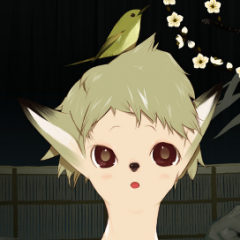
Post pics you like (Powered by Jun Inoue™)
Kenshin_sama reacted to john 'mr. customer' smith for a topic
http://i.imgur.com/QfgLKmJ.gifv1 point -
.thumb.png.ef80b4edeaf4f5215327e33be09f1628.png)
Pick a Pink!
Suzu Fanatic reacted to Dergonu for a topic
H-Hello my name is Derg, n-nice to meet you1 point -
1 point
-
1 point
-
1 point
-
1 point
-
There are a few screenshots on 4&5's steam page that looked just awful. With action writing like that, you're guaranteed to have your ass as firmly planted and far back in your seat as humanly possible.1 point
-
1 point
-
1 point
-
1 point
-
1 point


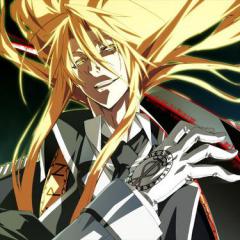
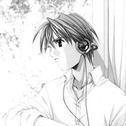
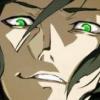
.thumb.jpg.d039cba08c7ad7caac02c4099f257619.jpg)
